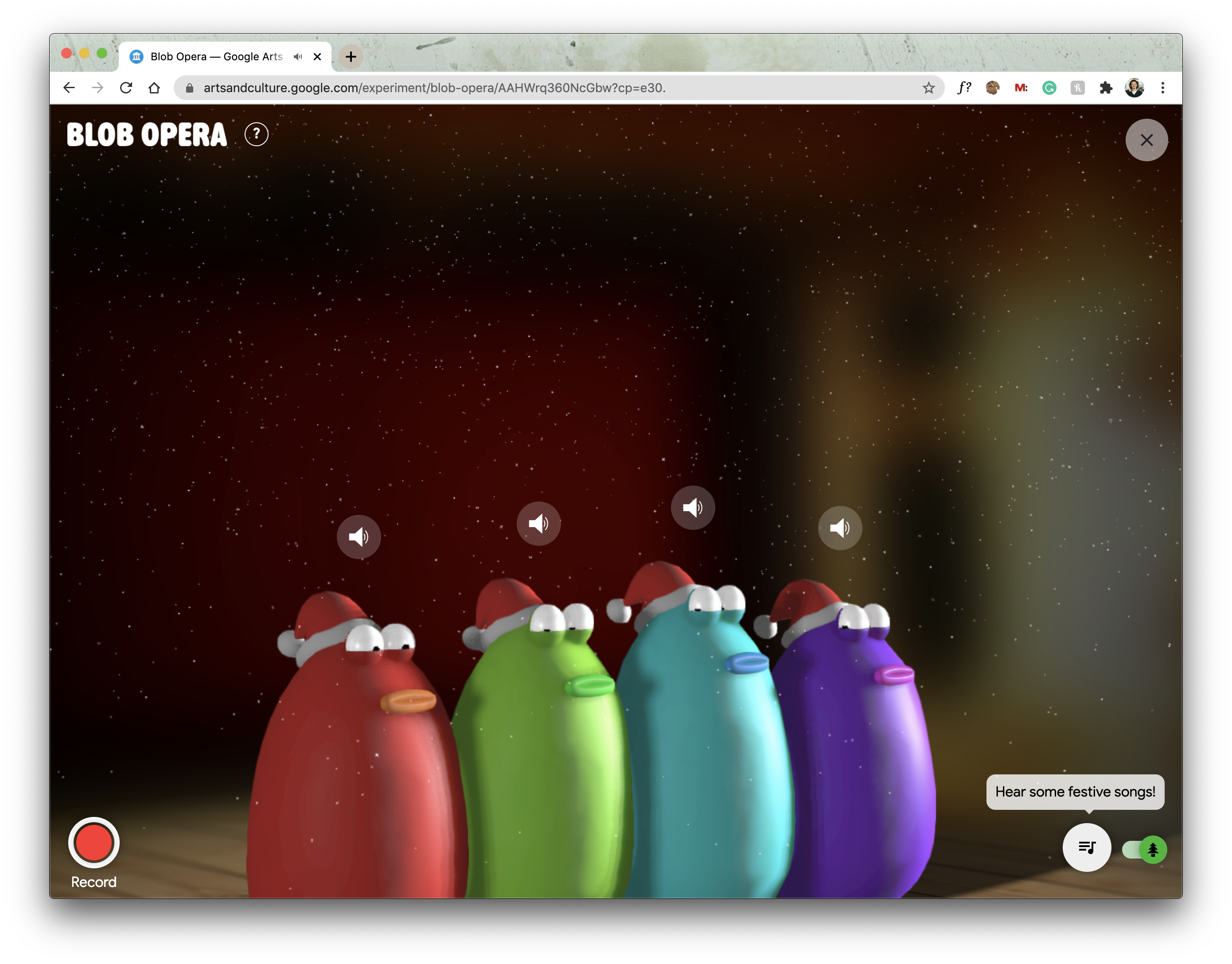
#BLOB OPERA SONGS SOFTWARE#
In 2019 Yamaha used its new VOCALOID:AI vocal software to recreate the voice of legendary singer Hibari Misora on the 30th anniversary of her passing. They can even mimic human voices, using deep learning paired with existing recordings to study and then duplicate a particular kind of voice. Here’s a link to “Mister Shadow,” a song entirely composed and performed by Sony Computer Science Lab’s “Flow Machines” AI system:

Now, thanks to machine learning and the development of artificial neural networks, computers can compose their own songs with hardly any human guidance at all. Of course, synthetic music’s come a long way over the past seventy years. Want to hear the Ferranti’s groundbreaking music for yourself? Just check out the link below for a digitally restored recording of that historic moment, and what the people listening had to say: This early melding of art and science would pave the way for similar fusions of musical and scientific genius over the years.
#BLOB OPERA SONGS HOW TO#
It’s a sample of three songs created by Alan Turing’s Ferranti Mark 1 computer, which filled up a whole room the melodies were programmed by Christopher Strachey, a computer scientist who also drew upon his experience as a piano player to teach the computer how to play music. There’s some debate on just when the first electronic music was created, but the oldest recording comes from 1951. This sort of musical collaboration between humans and computers has been evolving for a surprisingly long time. Just recently Google released Blob Opera, a machine learning tool by David Li that “pays tribute to and explores the original musical instrument: the voice.” There’s a link below for you to try it out for yourself: all you have to do is direct each of the singing blobs by sliding its range up and down with your mouse, and listen as they compose their own harmonies. One of the most innovative uses for machine learning, however, is in creating music. Find them the next time you search on Google for winter holidays like "Hanukkah," "Christmas" and "Kwanzaa.Machine learning has helped shape just about every aspect of our digital lives, whether it’s deciding which Netflix show or YouTube video to recommend to us or even teaching cars to drive themselves. Google Arts & Culture has also created holiday-themed virtual colouring books. The creative holiday fun doesn’t end there. But no worries if you’re feeling a bit too shy to compose: You can also have the Blobs put on a festive performance while you sit back and enjoy classics like “Jingle Bells” and “O Holy Night.” The blobs respond and harmonise to your input in real time.

The resulting experiment allows you to play Blob Opera, altering pitch & vowel sounds to create your own composition. In the experiment you don’t hear their voices, but rather the machine learning model’s understanding of what opera singing sounds like, based on what it learned from the opera singers. Tenor, Christian Joel, bass Frederick Tong, mezzo-soprano Joanna Gamble and soprano Olivia Doutney recorded many hours of singing. We developed a machine learning model trained on the voices of four opera singers in order to create an engaging experiment for everyone, regardless of musical skills.

This experiment pays tribute to and explores the original musical instrument: the voice.


 0 kommentar(er)
0 kommentar(er)
